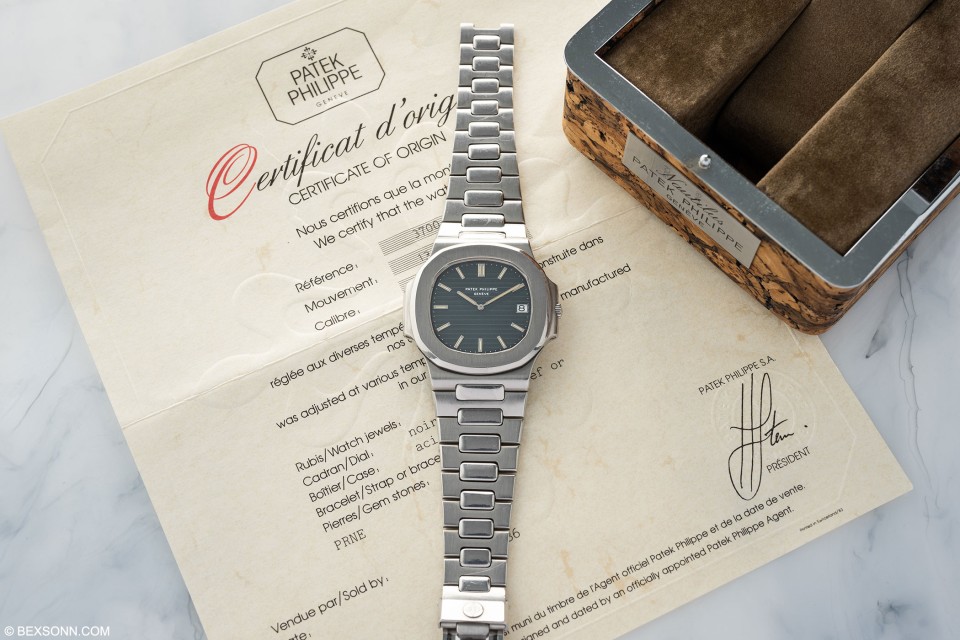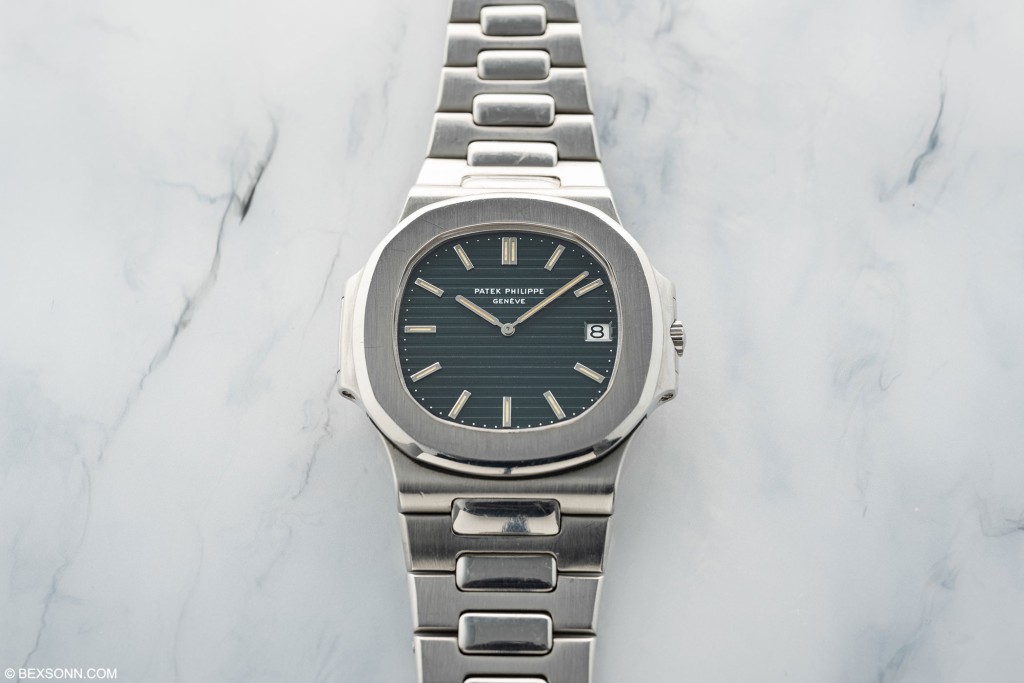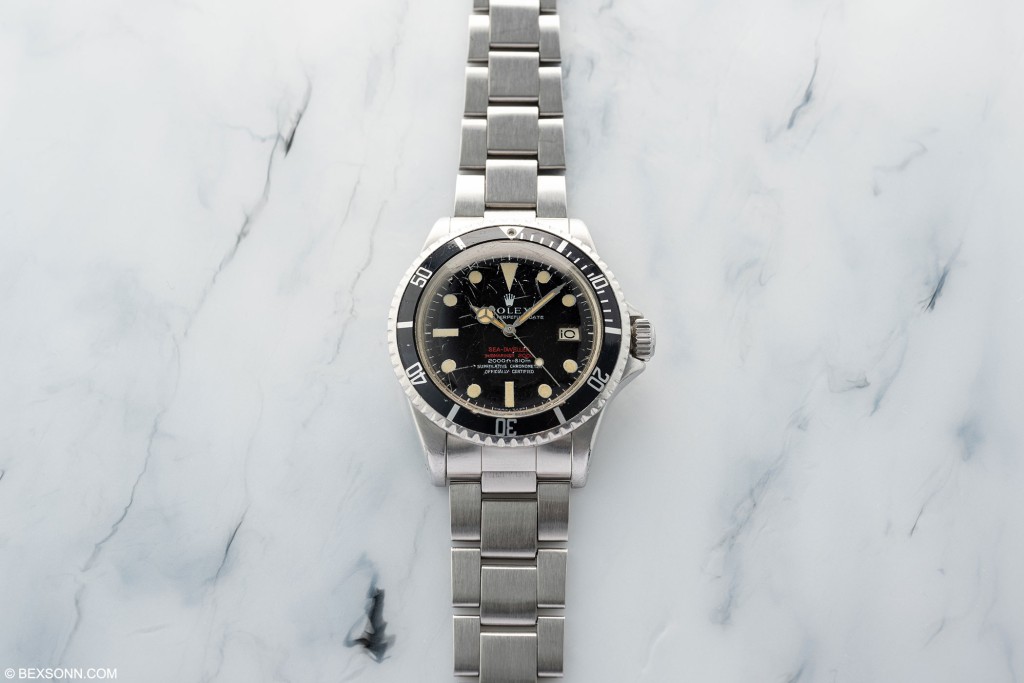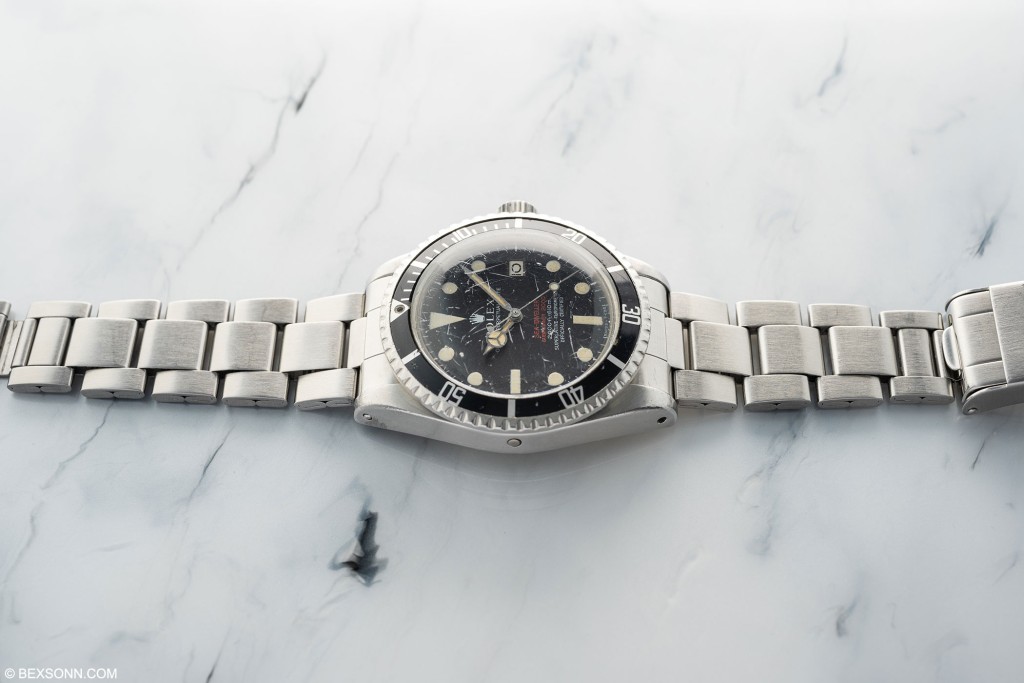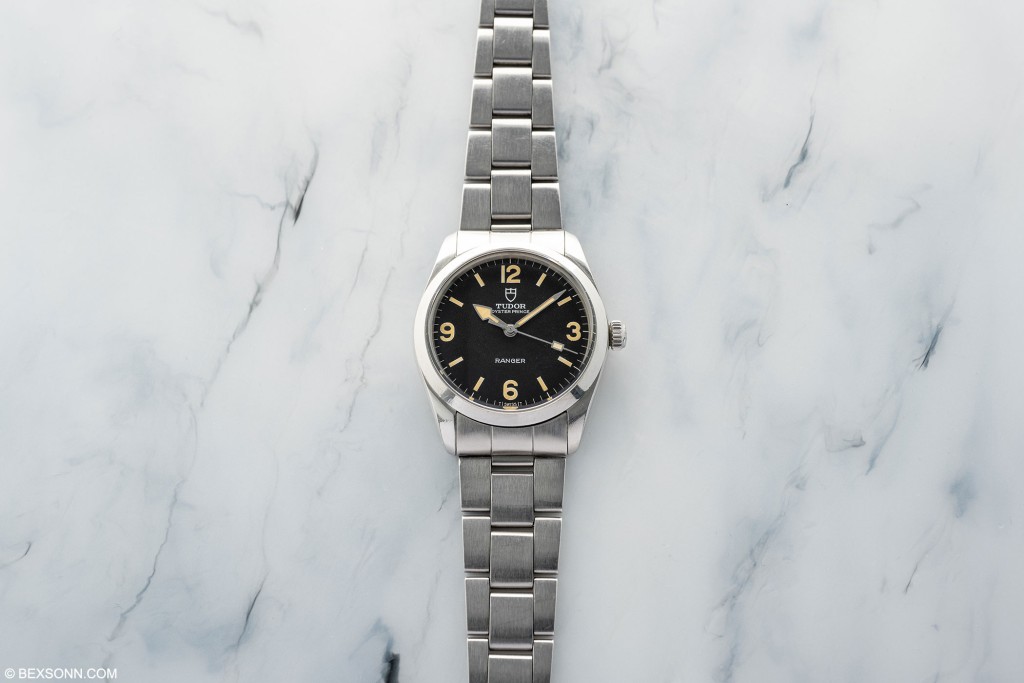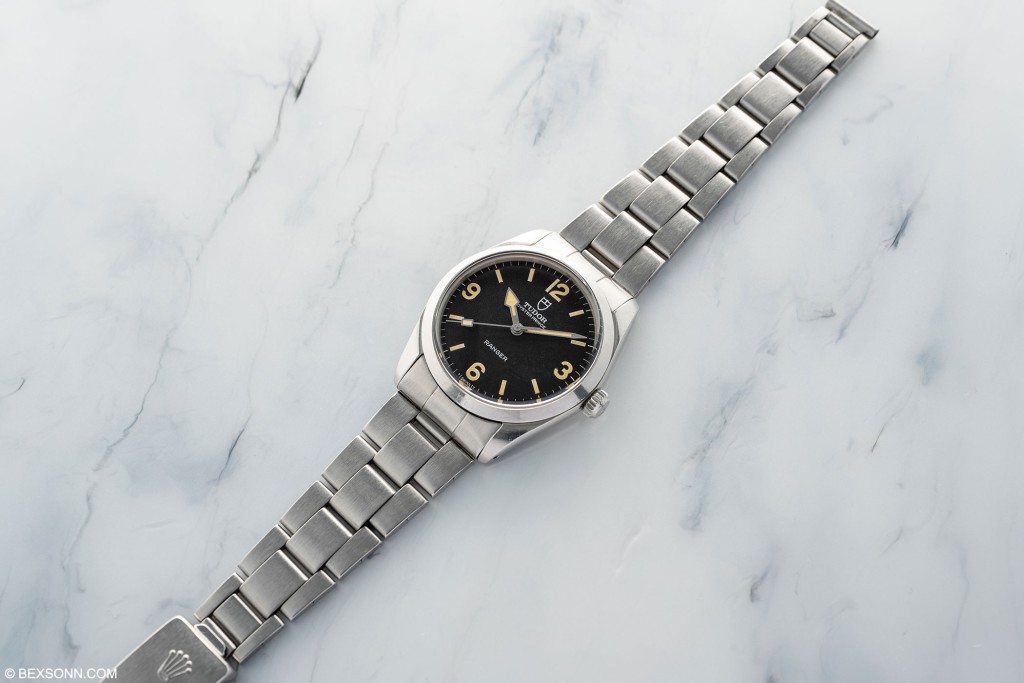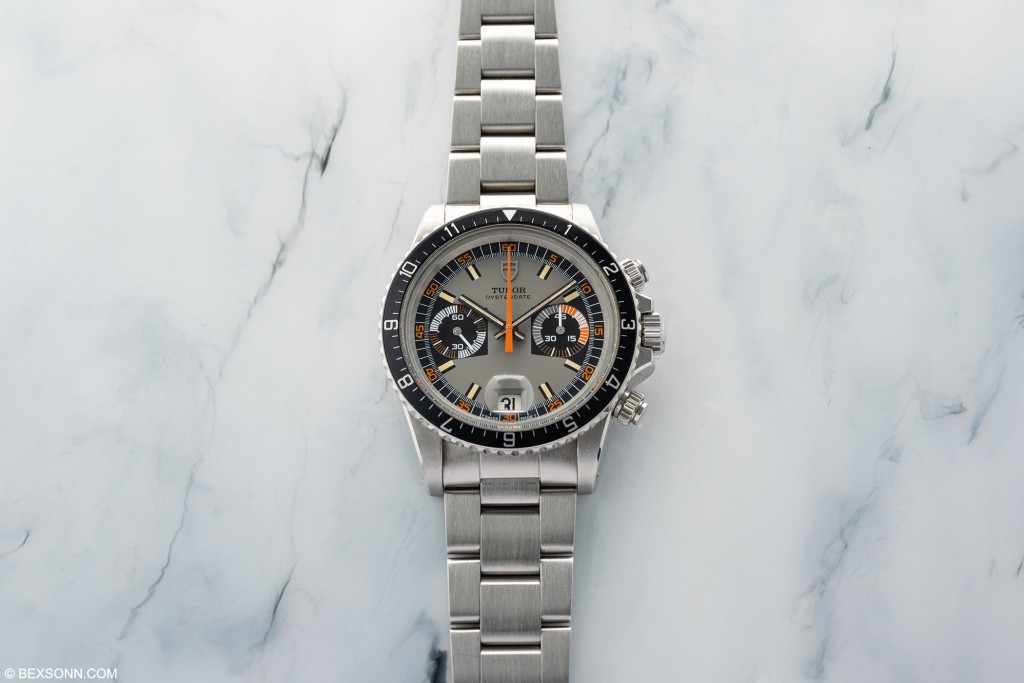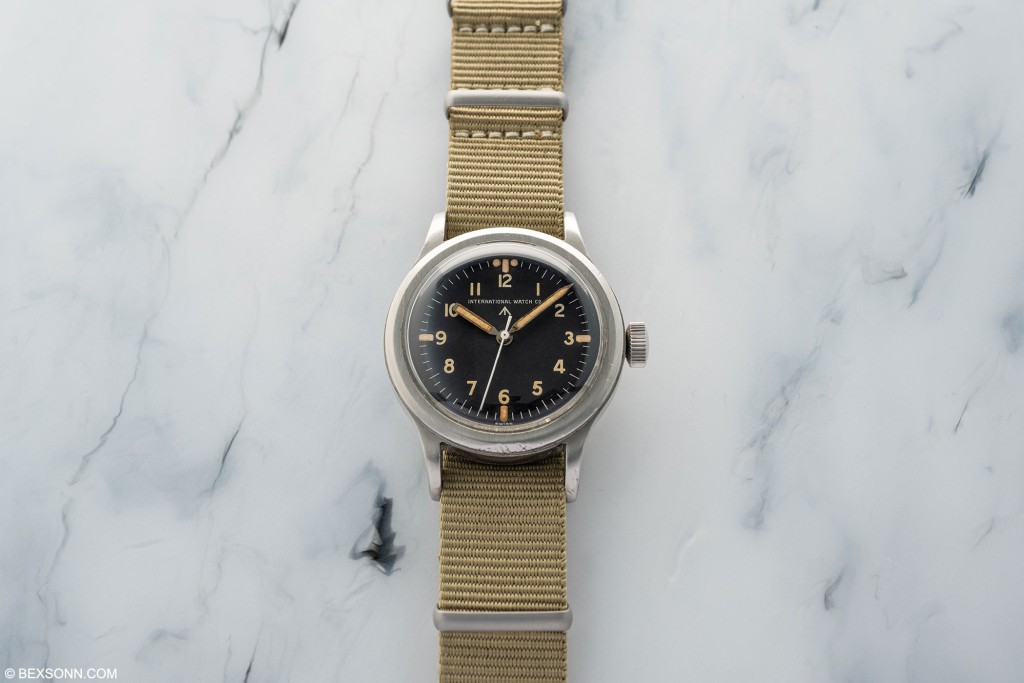The November auction marks Watches of Knightsbridge’s second auction of the year, though it doesn’t feel that long ago that we were thumbing through their first 2022 catalogue. It perhaps goes without saying that we would inevitably highlight some of our favourite lots. So, a few weeks ago we spent some time over at their South Kensington offices in the Michelin building, to get hands-on with some of the timepieces in the upcoming November auction. As per usual we decided to pick out some of our highlighted lots and share our thoughts on them.
PATEK PHILIPPE NAUTILUS 3700/1
Lot 58: Gerald Genta’s designs are iconic, and the Nautilus and it is said he was inspired by the portholes of transatlantic ocean liners. The watch itself was named after Captain Nemo’s Nautilus submarine from Jules Verne’s Twenty Thousand Leagues Under the Sea. The ‘Jumbo’ case with wide flat bezel, integrated steel link bracelet, and ultra-thin automatic movement had a masculine aesthetic compared to the smaller dressy gold mechanical watches of the time. The 1976 introduction of Patek Philippe’s Nautilus would shake up the high-end watch world – for the first time Patek Philippe would offer a true sports watch and indeed follow the path of a competitor in AP’s then four-year-old Royal Oak. Still, the Nautilus remains a classic today and this example is not only in original condition but comes with original cork box and papers.
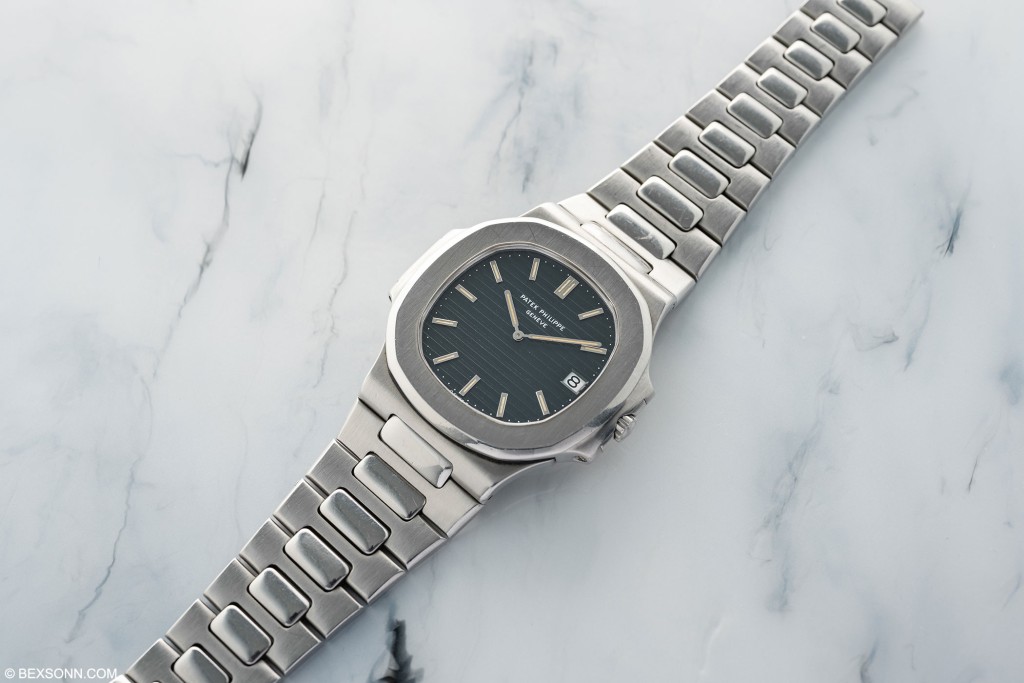
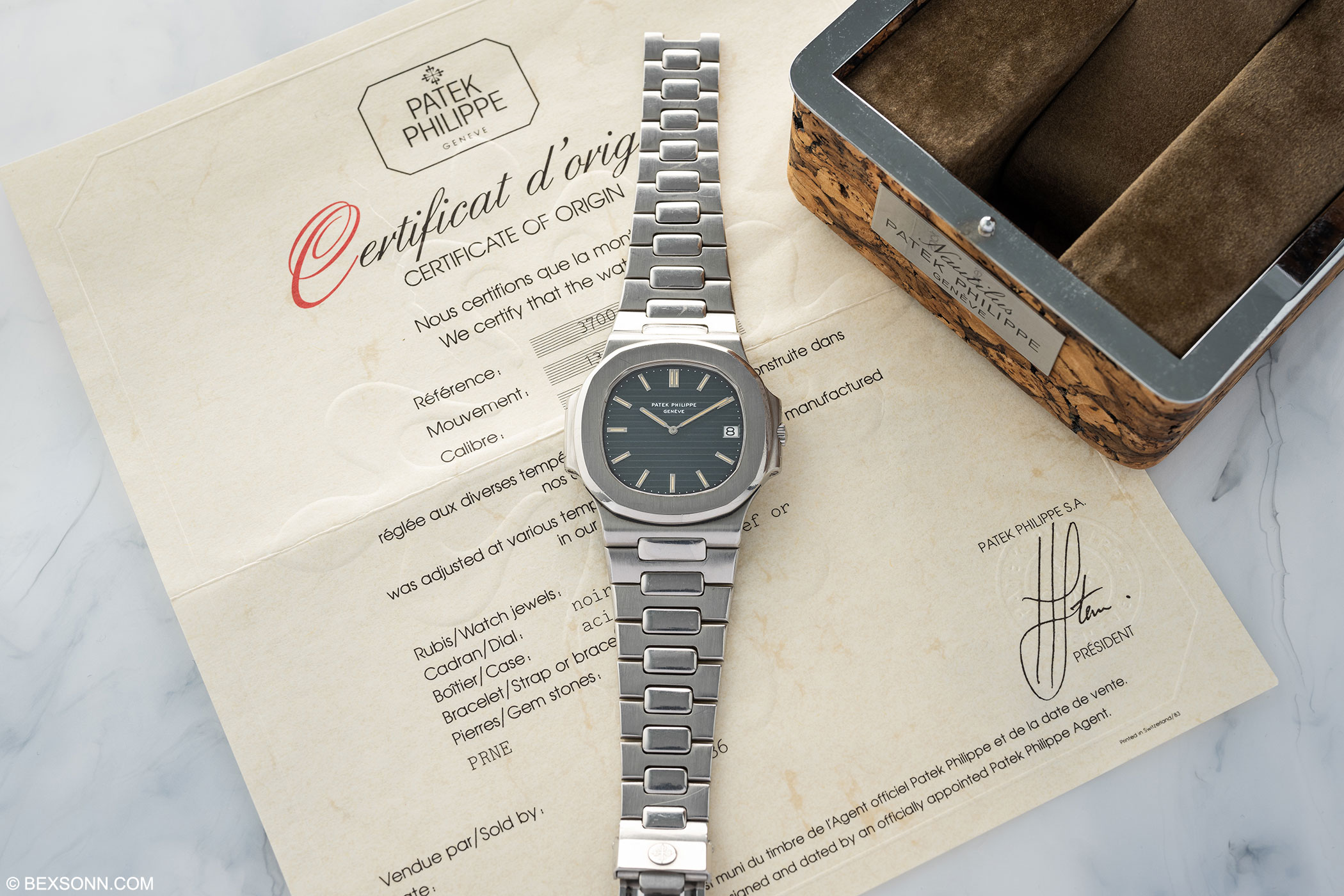
The last Nautilus we highlighted, which was yellow-gold, undoubtedly oozed flair, sophistication, and suaveness – this steel piece perhaps points to its more utilitarian purpose. This 1986 Nautilus features a black sigma dial which has lightly patinated to a grey-blue tone. The hands and inlaid hour markers also show signs of aging – with nice creamy patina. It comes on its original Patek Philippe Gay Feres bracelet, which also appears to be in good but worn condition. Of course, beating away inside is the automatic calibre 28-235C aka the JLC 2121. The case is perhaps not the greatest example we’ve come across on our horological journey; however, it is honest. Moreover, it is accompanied by its original cork box, which is extremely rare to find in this condition and comes with its original papers.
Estimate: £70,000 – £90,000
ROLEX DOUBLE RED SEA-DWELLER “THIN CASE”
Lot 59: I don’t quite know what it is but there is something about dive watches, which I just can’t seem to put my finger on, that I find ensue unassailable sophistication. This is perhaps partly due to the fact they were made with one function in mind. Let’s be honest, they were relentlessly designed to be utilitarian watches for both professional and recreational divers but for the most part, they’ve probably forgotten what sea water tastes like.
The Submariner was the tool of choice for divers, which was rated at 660 feet but Rolex being Rolex wanted to conquer the deep depths of the sea and were rather ambitious in wanting a watch capable of triple that – 2000 feet. A new model was given the reference 1665 and early deep saturation dive testing indicates that many of the first watches built failed due to the lack of a HEV (helium escape valve). Rolex then developed and patented the all-important helium escape valve, which was incorporated into the prototype Sea-Dweller. This valve released the helium from the watch case as the gas expanded during decompression after deep-water saturation dives, which prevented the watch from being damaged but still preserved its waterproofness.
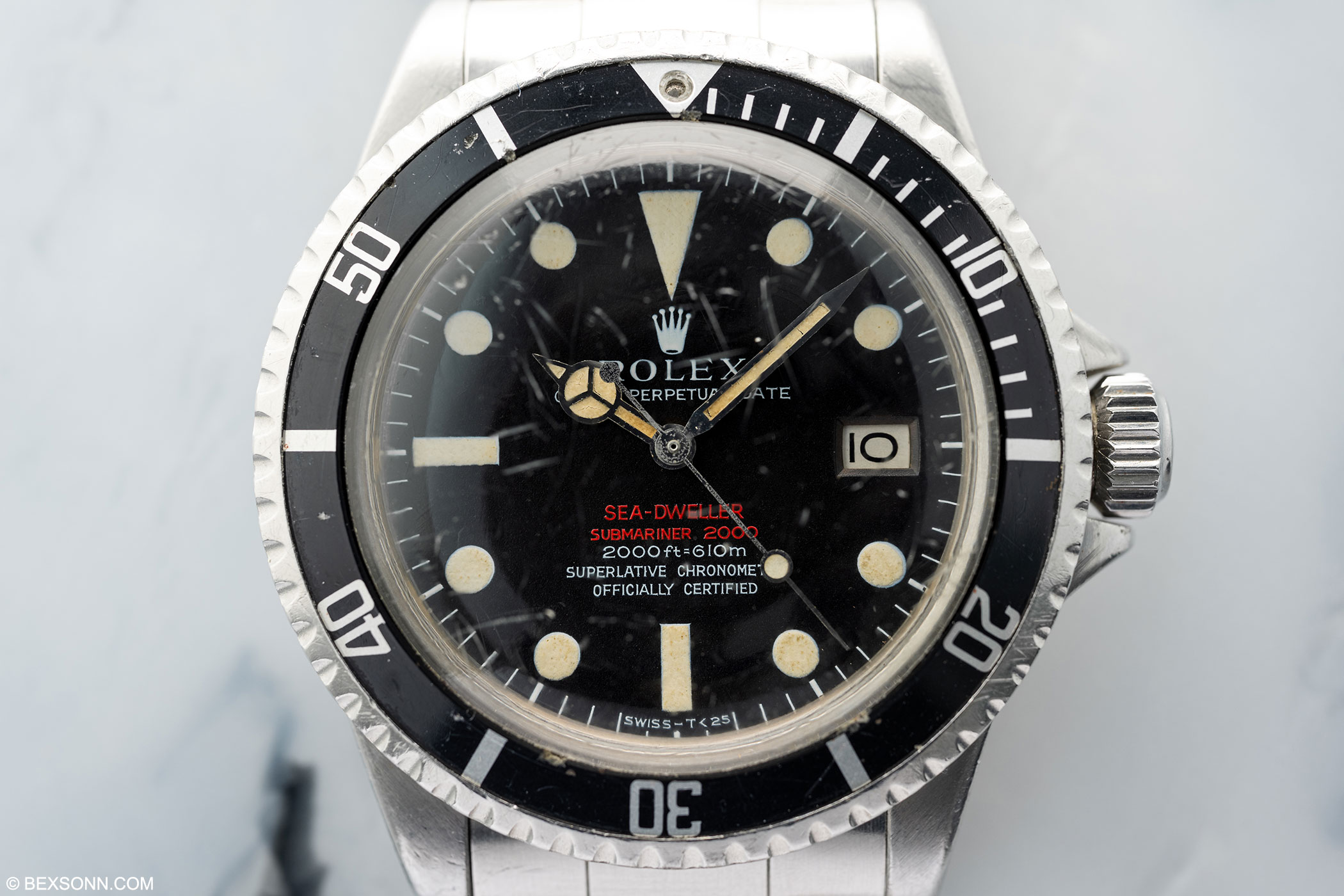
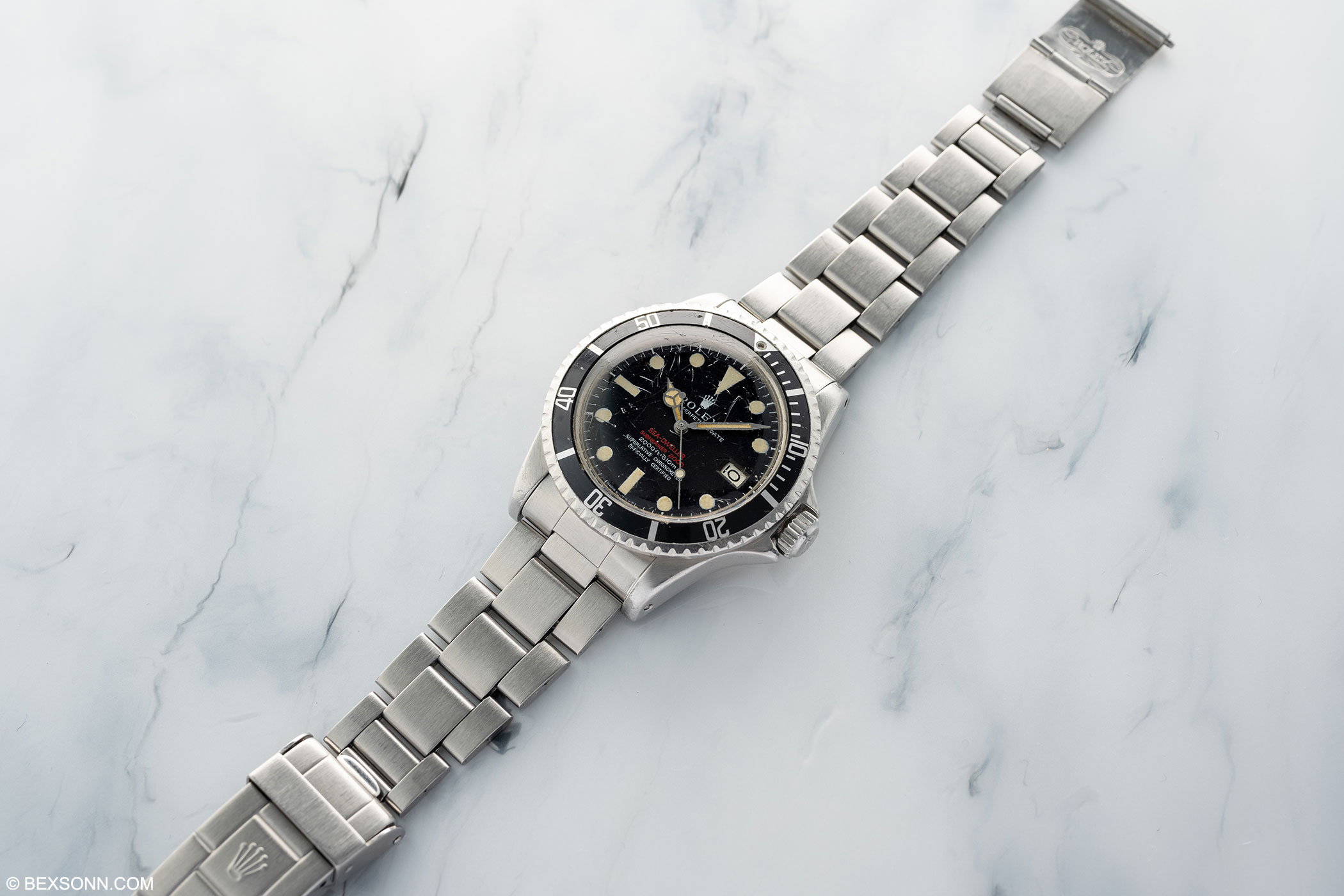
This reference 1665 featuring a Mk2 dial, evidence of the large, distorted coronet, and double red-writing. The dial has aged gracefully, exhibiting warm and all-matching patina on the hands and numerals. This model is a “Thin Case” example, which uses a case different to later 1665s, bearing more resemblance to a 1680 case. A very rare and exquisite example of the iconic Rolex diver’s watch. The case is offered in honest condition, showing signs of wear but also displaying it hasn’t been overly abused.
Estimate: £22,000 – £28,000
TUDOR RANGER
Lot 69: Over the past few years, Tudor have been on a bit of a role. Creating some of the most eye-catching reinterpretations of a handful of their iconic timepieces. Of course, this only leads to more interest in their past models and sparking a somewhat of a price increase in older models. As you likely known, the Tudor Submariner perhaps possesses one of the most iconic designs around during the 70s, though a piece you would’ve seldom come across is the Ranger. Tudor introduced the Ranger in the 1960s and was manufactured until the 1980s. However, Tudor reintroduced the Ranger in 2014, in a larger 41mm case but the design was slightly altered. This year Tudor introduced a new 39mm Ranger, which was modelled on this exact reference. The first Rangers were housed in a 34mm Oyster case, not too dissimilar to early Explorers, and featured a manual wound movement. Tudor eventually updated the Ranger with a self-winding movement and featured the option of a date window.
This circa 1968 Tudor Ranger ref. 7995/0 features a matte black dial, with applied luminous markers, 3-6-9-12 Arabic numerals and spearhead hands. You’ll of course note that the dial layout is remarkably like its big brother, the Explorer ref. 1016 – which these are often compared to. The Ranger features a Rolex-signed case, crown, and bracelet, with a Tudor signed dial and movement, which was common for Tudor to use Rolex-branded parts, other than the dial and movement – until the 1990s. Speaking of movements, beating away inside this Ranger is an automatic calibre 2483, signed Tudor Auto-Prince. The case is in good honest condition but what really makes this Ranger standout is the shield logo dial, automatic movement, and omission of a date window, which is rather special.
Estimate: £4,000 – £6,000
TUDOR “MONTE-CARLO” CHRONOGRAPH 7169/0
Lot 70: A few years ago, we featured an in-depth hands-on look at the Tudor ‘Monte Carlo’ Chronograph (which you can read here). The Tudor “Monte-Carlo” is a much-appreciated timepiece amongst Tudor collectors and in general lovers of chronograph wristwatches. It is a humble timepiece that for many years has been in the shadow of the Daytona. However, of late and with the resurgence of Tudor, these pieces have gained much more attention. This piece is in great condition but more importantly features one of my favourite bezel variations; the 12-hour graduated bezel, like the ones first seen on the 7033 prototype.
Estimate: £12,000 – £15,000
IWC MARK 11 BRITISH RAF “WHITE 12”
Lot 174: The IWC Mark XI is the descendent of the Mark X, which made up part of the twelve watches that met the MoD’s specifications that was also known as the dirty dozen. The IWC Mk XI is considered by many collectors to be one of the finest military watches ever produced and rightly so. The test these timepieces were put through to be deemed fit for service, so to speak, was quite demanding. These watches need to be highly accurate, with hacking seconds and be protected from magnetic interference, as well as waterproof and not forgetting have a highly visible dial. The Mark XI met all these requirements and had to be rigorously tested for days on end.
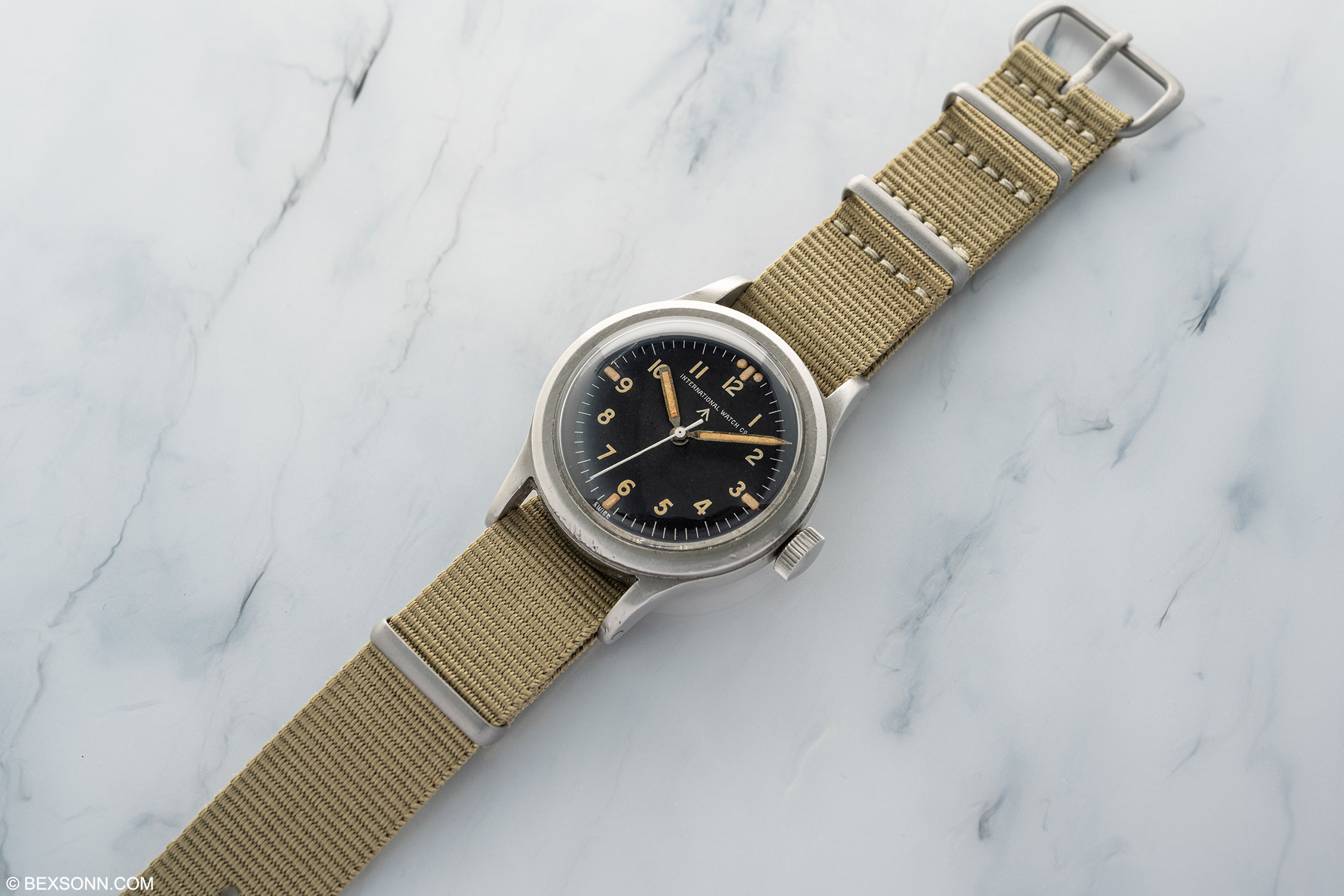
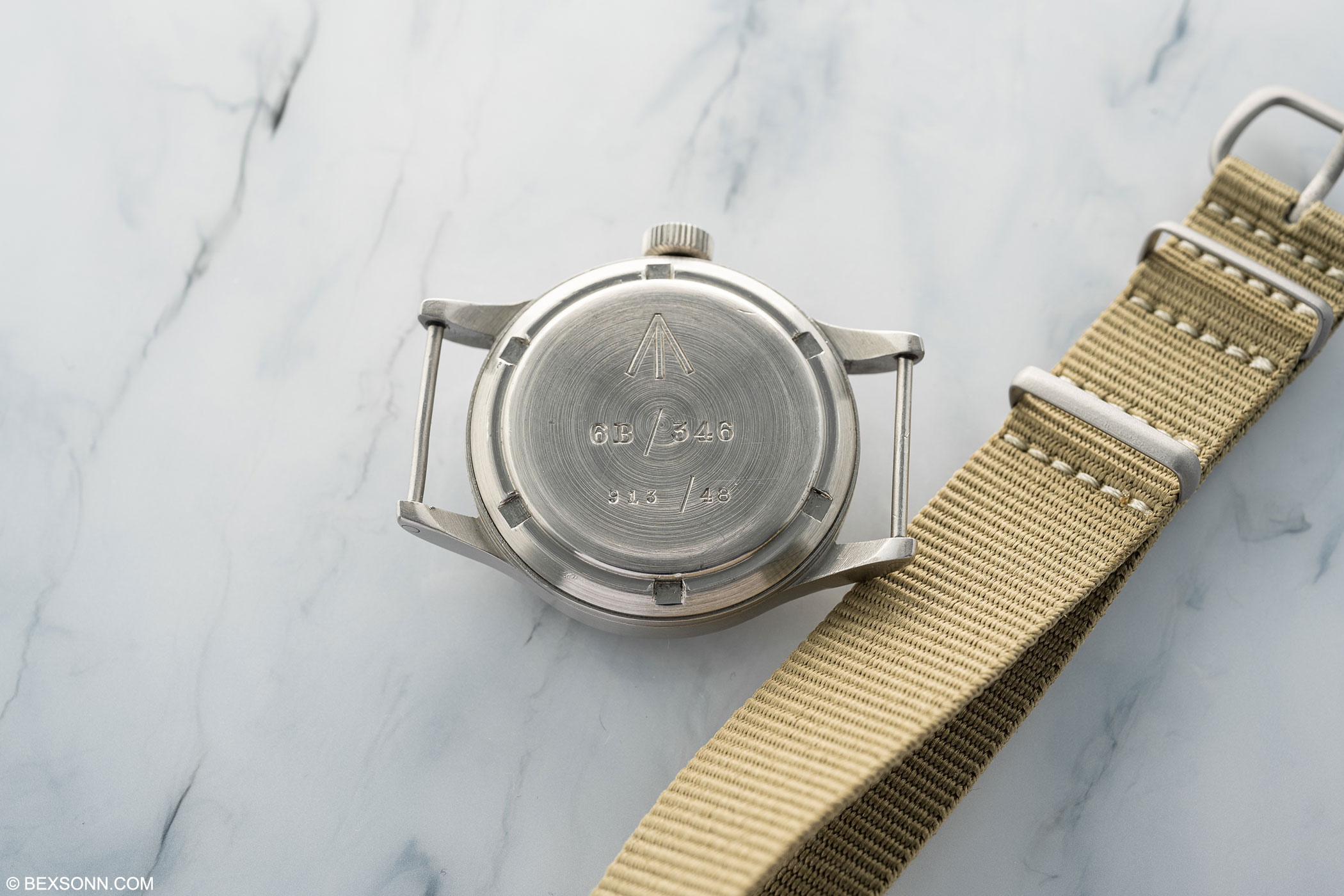
This IWC Mark XI features a black matte dial, with Arabic numerals and tritium luminous markers, alongside the all-important military arrow, just beneath the logo. However, what makes this example extremely rare is the omission of a triangle at 12 o’clock and instead the number 12. Inside is the manual wind, hacking seconds, famed caliber 89. The 36mm case features fixed bars and on the case back it’s issue markings (6B/346 913/48).
Estimate: £10,000 – £14,000
The Watches of Knightsbridge auction will take place on the 19th November 2022, be sure you visit watchesofknightsbridge.com for this month’s full catalogue.
